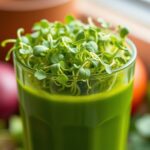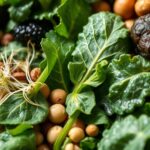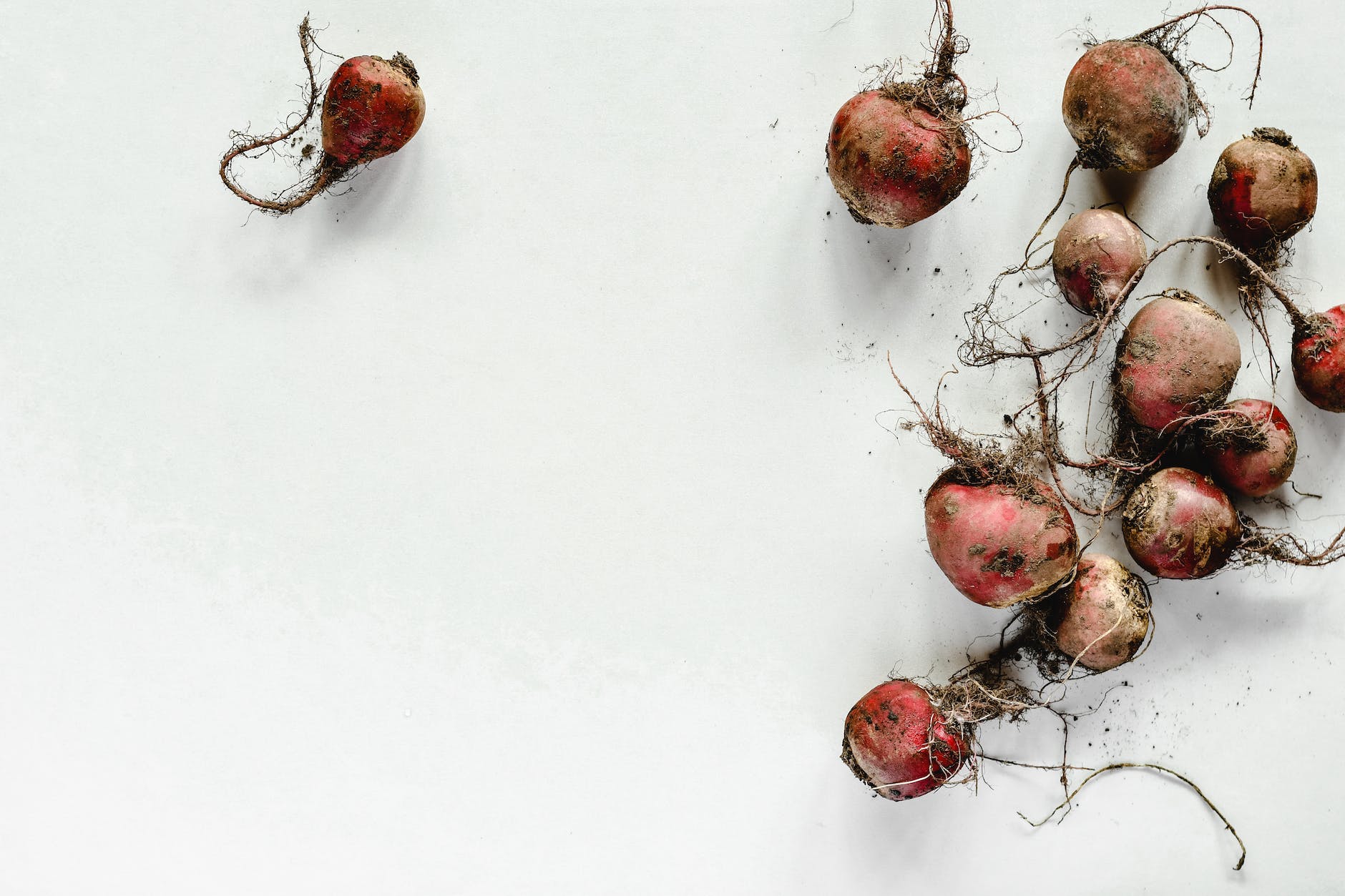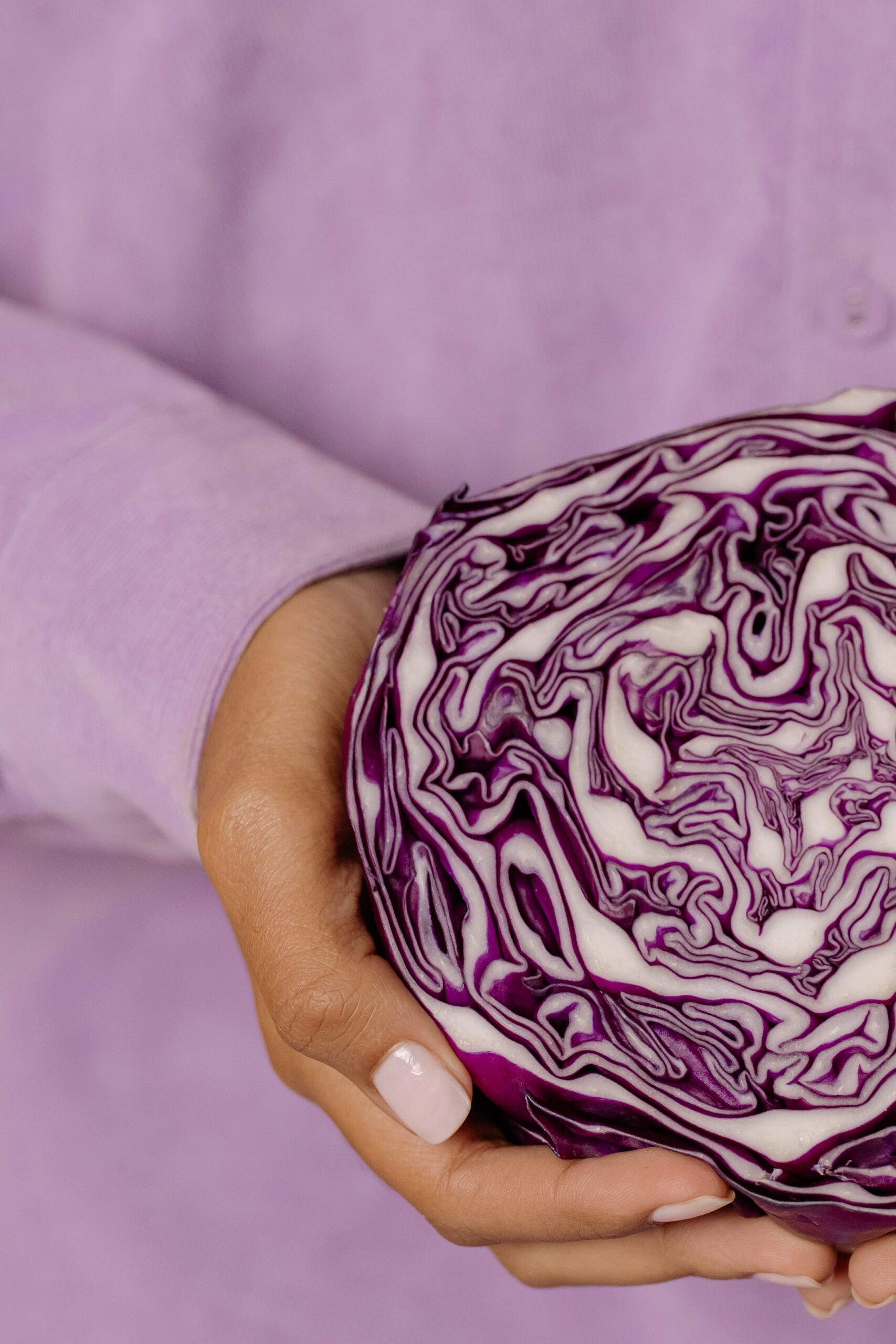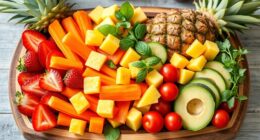To master raw culinary techniques like dehydrating and sprouting, you focus on preserving nutrients and flavors by minimizing heat and processing. Dehydrating removes moisture at low temperatures to create crunchy snacks while keeping enzymes intact, and sprouting involves soaking seeds to enhance their nutritional profile and digestibility. Both methods are simple, require minimal equipment, and open vibrant flavors. Keep exploring these techniques further to discover how they can elevate your raw dishes with freshness and nutrition.
Key Takeaways
- Dehydrating removes moisture at low temperatures to preserve nutrients and intensify flavors in fruits, vegetables, and herbs.
- Sprouting activates enzymes, increases nutrient levels, and reduces anti-nutrients by germinating seeds, beans, or grains.
- Proper equipment like food dehydrators and sprouting jars ensures even drying and healthy sprout growth.
- Minimal processing techniques preserve the true essence and nutritional integrity of fresh ingredients.
- Both methods enhance flavor, nutrient bioavailability, and digestion, offering vibrant, nutrient-rich raw dishes.

Have you ever wondered how chefs create vibrant, nutrient-rich dishes without cooking? Using raw culinary techniques like dehydrating and sprouting, they unlock flavors and preserve nutrients that often get lost during traditional cooking. These methods emphasize minimal processing, allowing you to enjoy the true essence of fresh ingredients. To get started, understanding the nutritional benefits and equipment essentials is key. Dehydrating retains most nutrients while intensifying flavors, making it perfect for snacks or toppings. Sprouting, on the other hand, boosts nutrient levels by activating enzymes and increasing bioavailability of vitamins and minerals.
Discover how dehydrating and sprouting unlock fresh flavors while preserving nutrients naturally.
Dehydrating involves removing moisture from foods at low temperatures, usually between 105°F to 115°F. This process preserves delicate nutrients and enzymes that are often destroyed by heat. As a result, dehydrated foods like fruit slices, vegetable chips, or herb blends maintain their nutritional benefits longer than their fresh counterparts. You’ll want a good-quality food dehydrator — a compact, adjustable device that circulates warm air evenly. While some people use oven drying, a dedicated dehydrator offers better temperature control and energy efficiency, guaranteeing your foods stay raw and nutrient-dense. You’ll also need a sharp knife or mandoline to prepare ingredients uniformly, and reusable mesh sheets to prevent sticking. These equipment essentials make the dehydration process straightforward, giving you control over texture and moisture content.
Sprouting involves soaking seeds, beans, or grains until they begin to germinate. This process activates enzymes, increases nutrient levels, and reduces compounds that can hinder digestion, like phytic acid. The nutritional benefits of sprouted foods include higher levels of vitamins C and B, increased bioavailability of minerals, and easier digestion. To sprout effectively, you’ll need a jar or sprouting tray, a fine mesh lid or cheesecloth, and a steady spot to keep your sprouts in indirect light. Rinsing and draining the sprouts regularly is essential to prevent mold and guarantee even growth. This simple setup allows you to grow fresh, nutrient-rich sprouts at home, adding crunch and vitality to salads, wraps, and bowls.
Both dehydrating and sprouting are accessible raw culinary techniques that emphasize minimal equipment essentials and focus on maximizing nutritional benefits. They empower you to transform simple ingredients into delicious, healthful foods. Whether you’re dehydrating fruit for a sweet snack or sprouting beans for a hearty addition to salads, these methods keep the integrity of the ingredients intact while boosting their health properties. With a few basic tools and a little patience, you can master these techniques and enjoy the vibrant, nutrient-packed dishes they create.
Frequently Asked Questions
What Are the Best Fruits for Dehydration?
You should choose fruits like apples, strawberries, mangoes, and bananas for dehydration because they preserve their flavor and nutrients well. These fruits work best with dehydration techniques, which remove moisture and extend shelf life, making them perfect for snacks or recipes. When selecting fruits for dehydration, pick ripe, firm options to guarantee ideal fruit preservation and vibrant flavors after drying.
How Long Do Sprouted Seeds Typically Take to Grow?
Sprouted seeds are like enthusiastic students, ready to learn and grow. Usually, seed growth takes about 2 to 7 days, depending on the seed type and environmental conditions. You can expect sprout timing to vary, with some seeds sprouting faster than others. Keep the seeds moist and warm, and you’ll see tiny green shoots emerge, signaling that your sprout growth is on the right track.
Can Dehydrated Foods Be Stored Long-Term Safely?
Yes, dehydrated foods can be stored long-term safely if you focus on proper food preservation methods. Keep them in airtight containers away from light, heat, and moisture to extend their shelf life. Proper storage prevents spoilage and maintains their quality over time. Regularly check for signs of moisture or pests, and replenish supplies as needed, ensuring your dehydrated foods remain safe and edible for months or even years.
Are There Any Health Risks With Sprouting Certain Grains?
Sprouting certain grains can pose health risks if not done properly. You should be aware of sprouting safety, as improper techniques may lead to grain contamination with bacteria like Salmonella or E. coli. To minimize risks, rinse grains thoroughly, use clean equipment, and keep sprouting at the right temperature. If you notice any off smells or mold, discard the sprouts. Proper care guarantees safe, nutritious sprouted grains.
What Equipment Is Essential for Home Dehydration?
Think of your kitchen as a laboratory where dehydration techniques become your secret weapon. You’ll need a reliable food dehydrator, a thermometer to monitor temperature, and clean, breathable trays. Regular equipment maintenance guarantees ideal performance and safety. This simple setup keeps your dried snacks perfect and preserves nutrients. With the right equipment, you turn fresh ingredients into long-lasting, flavorful treasures—your personal alchemy in the world of raw cuisine.
Conclusion
By mastering dehydrating and sprouting, you embrace health, creativity, and simplicity. You nourish your body, fuel your passion, and connect with nature’s rhythms. You innovate in the kitchen, honor raw traditions, and celebrate vibrant flavors. You transform everyday ingredients into nourishing art, empowering your culinary journey. In dehydrating and sprouting, you find patience, purpose, and joy—turning raw foods into a mindful, delicious lifestyle that truly feeds your soul.
Ilana has been a vegan for over 10 years. She originally made the switch for health reasons, but soon found herself becoming more and more passionate about the ethical and environmental implications of a vegan lifestyle. Ilana is the author of The Graceful Kitchen, a blog all about veganism. She loves to cook up delicious and nutritious vegan meals, and share her recipes with others who are interested in leading a cruelty-free life. Ilana is also a strong advocate for using whole foods as the foundation of a healthy diet, and believes that going vegan is one of the best ways to achieve this.







